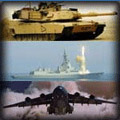Comienzo con un hilo abierto en otro foro de defensa
https://www.defencetalk.com/military/fo ... rks.14894/
Cheap visual processors & neural networks
I've been playing with the $100 Intel Neural Compute stick 2, a USB sized trainable neural network and visual processing unit - it enables all sorts of real time recognition of visual data such as facial recognition, number plate recognition etc It runs OpenCV and OpenVino and comes with a lot of samples, including pretrained models. It's not for the feint hearted and you need some experience with C++ to use it fully. You can deploy the trained models on a $50 Raspberry Pi, though training needs to done on more powerful Linux box.
We have set up a an example which recognises and reads number plates, allegedly up to 13 fps for video data, though we have only used still images. It's mind blowing, we are getting 100% correct reading of number plates. You can read about this stuff all day but until you see it in action I don't think you can fully grasp the implications. In robotics the 'perception problem' has been a real stopper for decades and this sort of cheap, OTS technology is going to be an incredible boost.
There would be many uses for this in the military. A simple use, you could put this very technology in a head of a missile after training it to recognise targets, such as warships, and get accurate target recognition. The Raspberry Pi has worked in space, so I don't see too many issue in a missile.
Understanding how an opponents 'see' you and how they process that becomes essential for defensive measures. With LO aircraft they already fly them with the lenses to increase their radar returns, this sort of strategy may have to be applied to ships to change their appearance in MW, visual and infrared appearance between peacetime and conflict. Using a decoy, like the nulka is a simple example of it but I wonder if it is going to need to be more profound.
It is also the technology that will most enable the 'killer robot' of science fiction, which was most hamstrung by the perceptual problem, now looking like it's going to be solved in the near future. Certainly any autonomous robotic system could benefit from this < $200 worth of hardware, if trained properly.
Fijaos en los términos:
* menos de 200$ australianos
* Raspberry pi
* Desarrollador sin apoyo de una megacorporación. De hecho, aparentemente con un equipo mínimo
* Software libre / de fuentes abiertas
El usuario habla de matrículas, pero las implicaciones son enormes. Sin megacorporaciones y cientos de millones de dólares, parece perfectamente factible emplear estos equipos ridículamente potentes para entrenarlos en que reconozcan otros inputs visuales.
Por ejemplo, un vehículo
Las implicaciones son sencillamente bestiales. Por un precio anecdótico, un desarrollador comparativamente modesto puede generar una cabeza buscadora para un dron. Por las mismas razones, no sería infinitamente caro generar una solución que entrenara para reconocer drones, como ya adelantó un socio mío el año pasado.
Precios. software libre. Conocimiento disponible
Components off-the-shelves
Todos estos componentes nos llevan a la distribución: muchos pueden generar soluciones capaces por muy poco dinero e invirtiendo relativamente poco dinero. Yo puedo hablar en primera persona de algo parecido. Empezando absolutamente de cero, leyendo y viendo videos, por menos de 100 euros he construido un dron de carreras y lo he programado con software libre. De cero, insisto.
Lo peor, en mi opinión: que mientras este tsunami de innovación se nos echa encima, Europa se empeña en seguir el camino de desarrollo de los 80. En otros campos Turquía, una nación con capacidades varios órdenes de magnitud inferiores a las del conjunto de Europa nos da un baño cada semana, con láseres, munición guiada, drones de ataque y un largo etc. Pero ni siquiera es un ejemplo completamente válido: actores no estatales van a poder producir un amplio abanico de soluciones de C3, defensa y ataque con unas capacidades que ahora mismo no están a la disposición de la todopoderosa OTAN.
En fin, creo que es importante mantener un hilo sobre IA, redes neuronales, machine learning y un largo etc. Obviando a hollywood o a los alarmistas, hay un campo enorme y revolucionario

/cloudfront-us-east-1.images.arcpublishing.com/mco/MW6AKBSUTVCKDP66O7JV4YUYTY.jpg)